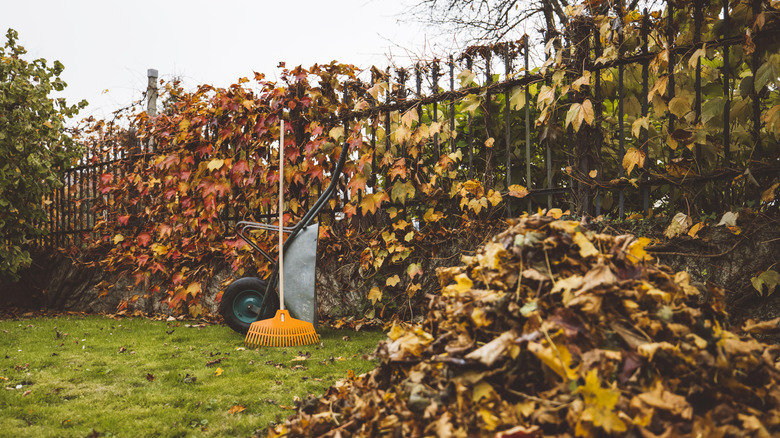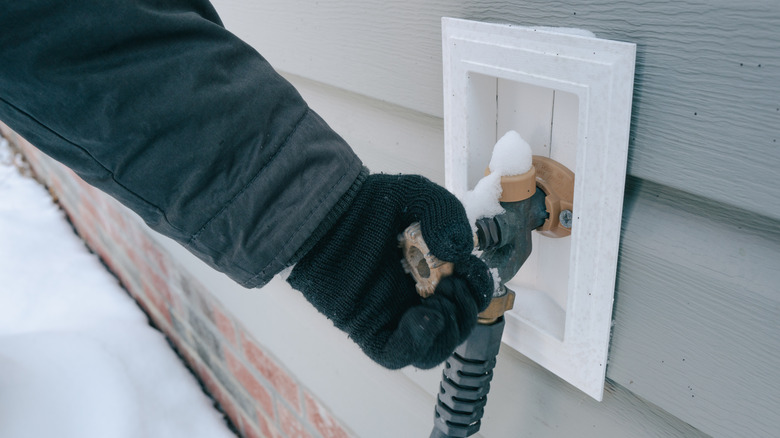Don't Forget This Important Fall Yard Task (It Could Cost You Big Time)
We may receive a commission on purchases made from links.
You've mowed the lawn one last time, mulched the leaves, and winterized the garden, checking items off your to-do list and preparing mentally for winter's short days and long nights. At the first prediction of a hard freeze, you think about the things you need to do inside to keep your home cozy and safe. But, forgetting to tackle one important outdoor fall task can lead to big headaches and big plumbing bills. Your outside hose spigots, or faucets, can freeze, potentially leading to burst pipes and all the indoor problems that arise when that happens.
Any water remaining in a hose that's connected to the spigot will also freeze, adding to the possibility of damage to the spigot and the pipe that connects it to the indoor plumbing. You should also check outdoor systems that involve water. Sprinklers and swimming pool equipment should be winterized, too.
Frozen water expands, and when it does, it causes pipes to burst. A crack in a water pipe as small as an eighth of an inch can leak as much as 250 gallons of water a day. This can happen out in the open, as in an unfinished basement where you can see the pipes, or behind a wall, where the damage might not be evident. If you can't see the leak, you can't fix it, and it may be weeks before you realize there's a problem. By then, your drywall could be damaged and mold might be growing. According to Angi, replacing burst pipes and repairing water damage could cost upward of $5,000.
How to winterize your spigot
No matter what type of outdoor spigot you have, you'll need to winterize it, a process that shouldn't take more than a few minutes. Begin by removing the garden hose, letting it drain, and storing it in a protected space for the winter. If your outdoor faucet has an interior shut-off valve, close it. If you don't, you'll have to turn off the main water valve while you work on the faucet. Open the spigot to drain any water remaining in it after you've disconnected the hose, then turn the faucet off. Finally, place a cold weather cover, like the Frost King Foam Faucet Cover, over the spigot. Make sure the entire faucet is covered and that the covering won't blow off. If you have old spigots, consider replacing them with frost-proof versions that allow water to drain from the spigot's pipe after it's turned off. Remember to turn the water back on.
If you try to turn the handle of your outdoor faucet and it won't open, it may be frozen. Use gentle heat from a hair dryer, heating pad, or warm towels to thaw it. Never try to force the handle and don't shock it with boiling water or an open flame — this can further damage the spigot. If water flows once the faucet is warm, you've probably solved the problem. If water isn't flowing, you may have a frozen pipe. Use the same gentle warming technique on interior pipes with the outdoor faucet open. As the pipe thaws, the flowing water will help speed up the process. Call a plumber if you can't find the frozen pipe, if it's inaccessible, or if thawing didn't solve the problem.

